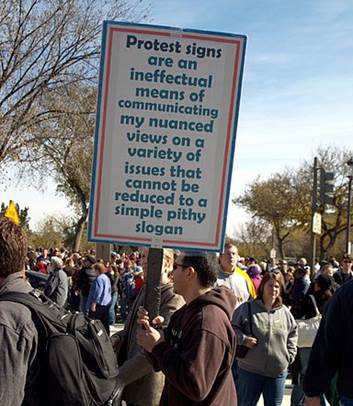The More Things Change…The More They Stay The Same

Part 10 of the series “The Last Frontier facing the New Frontier“…Facing the Past Frontier
John M. Sedor, Sedor, Wendlandt, Evans & Filippi, LLC
This is the last installment in our series “The Last Frontier Facing the New Frontier.” Over this past year, we have tried to show how school districts and education law in general is addressing new technology, new rights, and new approaches which have become part of the education challenge over the last several years. And yet often, facing the New Frontier requires a keen understanding of the past. For those who remember the DeLorean, it can be like “Back to the Future.”
Over the last few months, the headlines have been about student protests across the country. Student protests, student walkouts, and student arrests all send me reeling back in time to the 1960’s. Student protests have even come to Alaska high school campuses and our State capital this year.
Discontent and disagreement with the Government is seemingly timeless. Protests against the government – whether you agree with the issues or not – are uniquely part of the American fabric. The seed of independence for the United States was protests against the British Empire. This explains why the right to protest – the right to express disagreement and frustration with the government – is enshrined in our Constitution.

The First Amendment provides: “Congress shall make no law respecting an establishment of religion, or prohibiting the free exercise thereof; or abridging the freedom of speech, or of the press; or the right of the people peaceably to assemble, and to petition the Government for a redress of grievances.”
This right is not just for adults only. Back in the 1960’s, the US Supreme Court found that the right to express opposition to the government could also be exercised by students in public schools. That seminal case, Tinker v. Des Moines, secured the idea that students do not “shed their constitutional rights to freedom of speech or expression at the schoolhouse gate.” The Tinker case involved a protest in the school. Students, including 15-year-old John and 13-year-old Mary Beth Tinker, wore arm bands in opposition to the Vietnam War. The school thought this action might cause a disruption, so the students were suspended.
The Supreme Court found that the armbands constituted symbolic speech and, therefore, the student protests were constitutionally protected so long as the speech did not “materially and substantially interfere” with the operation of the school or could be reasonably forecast to be disruptive to school operations.
Students’ right to protest is not confined to inside the school building either. In Morse v. Frederick, a high school student in Juneau, Alaska unfurled a banner that stated “Bong Hits 4 Jesus” during the Olympic Torch parade and … was promptly suspended. The case worked its way to the Supreme Court which, in a close 5-4 vote, held that a school could suspend a student for speech that promoted illegal drug use. The Morse v Frederick case is seen by many as a content restriction allowed because while students have free expression rights, they are not co-extensive as adults. A school district can restrict the content of speech more so than a city government can in a public park.
Content restrictions are subject to substantially more scrutiny than restrictions that do not focus on the viewpoints being expressed. These non-viewpoint restrictions are referred to as Time, Place, and Manner restrictions and allow the government – including a public school – to make sure that protected speech does not interfere with the rights of others. For instance, a government can impose limits on the noise level of a protest, cap the number of protesters who may occupy a given place, restrict the time of protests, and/or restrict the size or placement of signs on government property. These time, place, and manner restrictions do not – in most circumstances – constitute viewpoint discrimination and can be used by public entities, including schools, to balance the right to free expression with the rights of others. Violations by protesters of time, place, and manner restrictions are the basis for some of the actions taken by universities recently.
The framework applicable to free expression created over the last 250 years still applies today. It is a system that uniquely allows and protects speech and protest. The framework gives public schools – because of their unique role in our society – the ability to restrict some content and viewpoints. But this ability is limited. Content neutral or “time, place, and manner” restrictions are more likely to pass legal review.
As we close out the 2023-24 school year and look ahead to the future, the New Frontier – whatever it may bring – will be evaluated by the courts using precedent that has, by its very nature, a firm anchor in the past.
Have a great summer!
Practice Pointers
- Review District policy and student handbooks on speech and expression to make sure they address the limited content restrictions allowed. Make sure they also provide the District with the content neutral time, place, and manner restrictions “tools” to balance student speech with the District’s mission.
- Consider administrative and staff training on student free speech to reduce the likelihood of misapplication of constitutional rules during the day to day operations of the school.
- Educate students on how they can protest legally to reduce the likelihood of a dispute.
More from Sedor, Wendlandt, Evans & Filippi, LLC:
- Current series: The Last Frontier Facing the New Frontier
- Ten part series: Fine Tuning
- Nine part series: A Free AND Ordered Space
- Nine-part series: Ripp’d from the Headlines
- Seven-part series: Technology and the law
- Eight-part series: Interacting with the world outside of the school
- Five-part series: Union Issues in Schools
- Four-part series: Freedom of Expression in Schools
